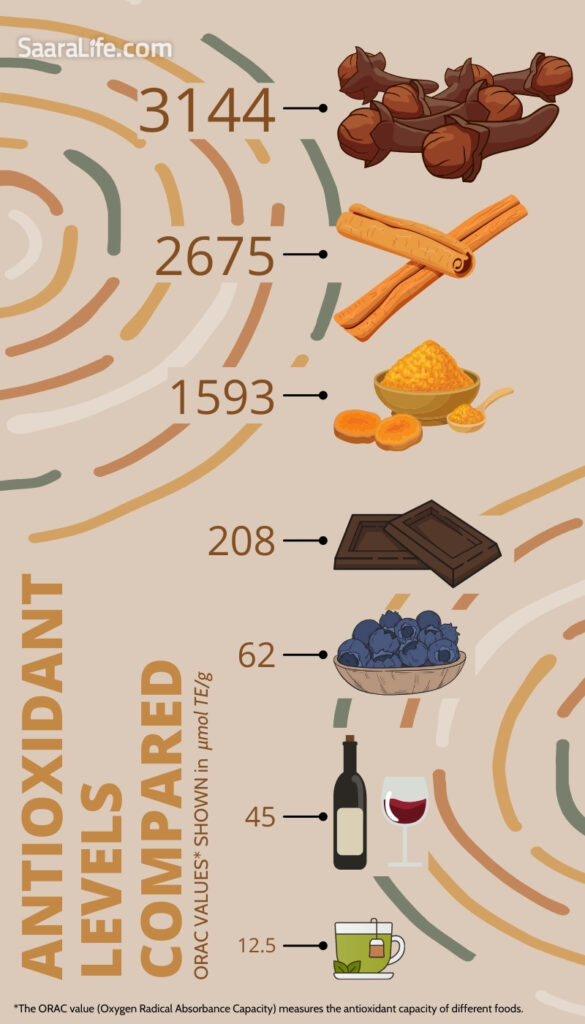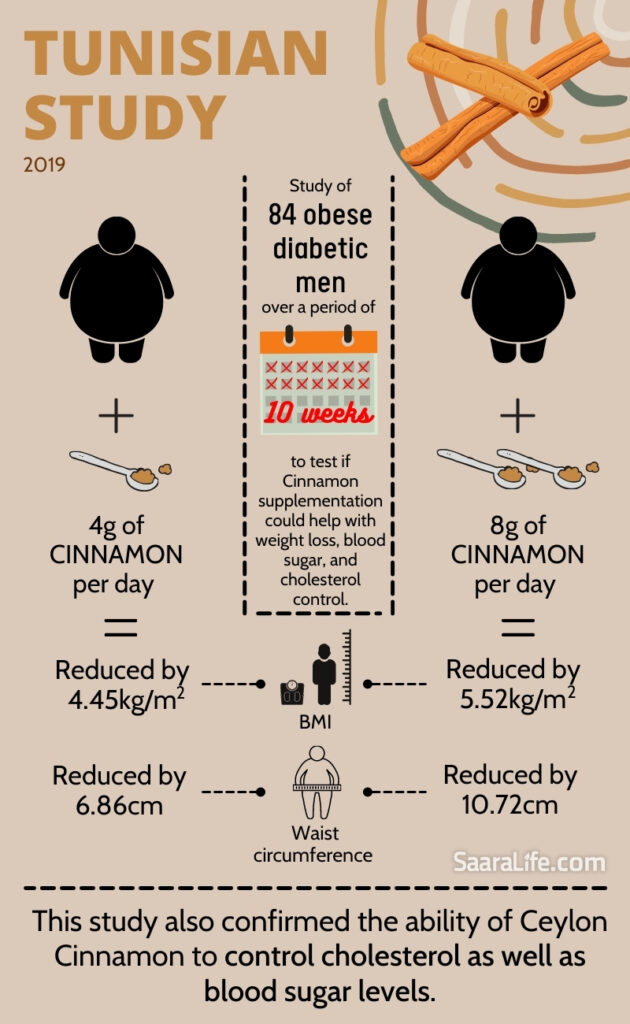Ceylon Cinnamon was once considered more valuable than gold. Cinnamon was so highly sought after among ancient nations, such as the Egyptians, that it was regarded as a gift fit for monarchs. It was also one of the reasons that the Dutch invaded Sri Lanka and became the most profitable spice for the Dutch East India Company.
But it’s Cinnamon’s use as a medicinal agent that has scientists buzzing. Cinnamon is a powerhouse of phytochemicals, and is one of the richest sources of antioxidants found in the world.
However what most people don’t realize is that if you live in the US or Europe, is that the cinnamon powder in your pantry is most likely Cassia and not true Ceylon Cinnamon powder. Cassia, commercially branded as Cinnamon, is widely sold in US, Canadian and European supermarkets.
There are roughly 4 popular varieties of Cinnamon. These are categorized based on the growing location and chemical characteristics, which are unique to each variety.
Types of Cinnamon
Ceylon Cinnamon (Cinnamon zeylanicum)
Ceylon Cinnamon is native to Sri Lanka (formerly Ceylon, hence the name Ceylon Cinnamon). This is considered one of the most expensive spices in the world. It has a distinctive sweetness and almost floral scent that sets it apart from the other varieties.
Cassia
Chinese Cassia (Cinnamomum cassia) – Chinese cassia is produced in both China and Vietnam. It is the most widely available variety of Cinnamon in the world.
Indonesian Cassia (Cinnamomum burmannii)
This variety is called Padang Cassia or Korintje. It is also considered the cheapest type of Cinnamon, and contains very high amount of coumarin.
Vietnamese Cassia (Cinnamomum loureiroi)
Also called Saigon Cinnamon, is more closely related to Chinese Cassia than Ceylon Cinnamon.

Does it really matter?
Well that depends very much on why you are consuming Cinnamon. Due to the inherent sweetness of Ceylon Cinnamon most Central and south American countries prefer Ceylon Cinnamon over its competitor. However, the real difference comes when Cinnamon is used for its health benefits. The Chemical profiles of each variety of Cinnamon is quite different; and one of the most important differences is the amount of Coumarin, a substance known to cause liver damage found in each variety.
The BFR (German Federal Institute for Risk Assessment) recommends that an adult should not consume more than 0.1mg/kg of body weight of coumarin daily, so if you are a 60kg adult, you can only consume about 6mg of coumarin on a daily basis. A study analyzing Cassia Cinnamon showed that the average value of Coumarin in Cassia was ~3.8mg/g of powder. On the other hand, Ceylon Cinnamon has only ~0.48mg/g.
Then again, why does this matter?
This matters, as many of the health benefits of cinnamon we discuss below require a minimum intake of 3g going up to 8g of Cinnamon.
Health benefits of Cinnamon
Known from ancient times to present day for its varied health benefits, Cinnamon has been one of the most commonly used and studied ingredients in the world. A lot of these studies are animal based and lab/chemistry-based studies. However, now more and more studies on human’s are proving that Cinnamon has clinical significance. Here we list the top 5 properties that scientists have seen clinical results.
Antioxidant Activity
Antioxidants are substances that can prevent or slow damage to cells caused by free radicals. Cinnamon has a very high concentration of powerful antioxidants.
In a study that compared the antioxidant activity of 26 spices, Cinnamon wound up as the clear winner, even outranking “superfoods” like garlic. (You can read more about antioxidants in our blog article “Antioxidants – What’s the Hype?“)
A Cinnamon water based extract taken twice daily for 12 weeks has been shown to benefit the antioxidant status in overweight individuals with impaired fasting glucose
However research as also cooking and storage has been found to reduce the antioxidant capacity of Cinnamon extract.

Anti-Inflammatory Activities
Inflammation is your body’s response to an injury or infection. For example, if you scrape your knee or catch a flu, your immune system responds by sending an army of white blood cells to protect the area, which results in redness and swelling.
On the other hand inflammation is also the cause for many age-related diseases including cardiovascular diseases, diabetes, cancer, asthma and rheumatoid arthritis.
A study that assessed 6 different human studies that looked at 285 participants looked at the effect of Ceylon Cinnamon on indicators of Chronic inflammation (C-reactive protein-indicator of inflammation), noted significant reductions. Some studies note that it could be the phytochemicals present in Cinnamon, such as Proanthocyanidins, that is responsible for this property.
Another interesting study was conducted by the University of Samford, to test if Cinnamon supplementation could help muscle soreness and improve performance of athletes (the university cross country team). They studied these 18 athletes over 9 days, and supplemented 9 athletes with 3 grams of Cinnamon and 9 with a placebo. After 9 days, they noted that post-exercise muscle soreness was significantly reduced.

Anti-Obesity Effects
One of Cinnamon’s less well known properties are its anti-obesity effects. Despite successful animal studies, only recently have attempts been made to study the impact of cinnamon for weight loss.
A recent studylooked at the effect of 8g vs 4g of Ceylon Cinnamon on 84 obese diabetic men. This study not only confirmed the ability of Ceylon Cinnamon to control cholesterol as well as blood sugar, but also showed a significant improvement in weight and body mass.
| Daily Dose | 8g of Ceylon Cinnamon | 4g of Ceylon Cinnamon |
| Body Mass Index (BMI) | -5.52 Kg/m² | -4.45 Kg/m² |
| Waist Circumference (WC) | -10.72cm | -6.86cm |
This paper confirmed the findings in a paper published in the journal of clinical nutrition, that looked at 12 different human trials. When the researchers specifically analyzed the body weight (BW), Body Mass Index (BMI), Waist Circumference (WC), and Fat Mass (FM) of the 786 people that had enrolled in these trials they found the following;
| Body Weight | -1.02 Kg Greater effects on BW were observed in with a baseline BMI of ≥30 kg/m2 (Weighted mean difference: 1.93 kg) |
| Body Mass Index (BMI) | -0.51 kg/m2 |
| Waist Circumference (WC) | -2.40 cm |
| Fat Mass (FM) | -1.02% |

Cholesterol- and Lipid-Lowering Effects
Cinnamon has shown excellent cholesterol and lipid lowering effects in a number of animal studies.
Numerous human studies further supported these findings. In a study with 150 people with type 2 diabetes, when given 3g and 6g vs a placebo, showed significant declines in Triglyceride levels, LDL levels and an improvement in HDL levels.
A large review study that assessed 13 randomized controlled trials with 750 participants also noted significant reductions in both triglycerides as well as total cholesterol.

Antidiabetic Activity
Cinnamon is well known for its blood sugar lowering properties.
It works in your body via multiple mechanisms; however, it has been shown that the primary mechanism is through its ability to reduce the amount of glucose entering your bloodstream. It does this by modifying certain digestive enzymes that breaks down carbohydrates into glucose.
This particular property is the most widely studied benefit known to Cinnamon. Numerous lab, animal and human studies have confirmed a significant improvement in fasting blood glucose.
However, multiple studies in the past have shown conflicting results for HbA1c, an important blood test that gives a good indication of how well your diabetes is being controlled.
Final Words
The word is out about the health benefits of Cinnamon, but always be aware of the cinnamon products you are using, as it is always safer to use Ceylon Cinnamon.
Sources
- Shan B, Cai YZ, Sun M, Corke H. Antioxidant capacity of 26 spice extracts and characterization of their phenolic constituents. J Agric Food Chem. 2005 Oct 5;53(20):7749-59. doi: 10.1021/jf051513y. PMID: 16190627.
- Vallianou, Natalia & Tsang, Catherine & TAGHIZADEH, MOHSEN & DAVOODVANDI, AMIRHOSSEIN & Jafarnejad, Sadegh. (2018). Effect of Cinnamon (Cinnamomum Zeylanicum) supplementation on serum C-reactive protein concentrations: A meta-analysis and systematic review. Complementary Therapies in Medicine. 10.1016/j.ctim.2018.12.05.
- Gunawardena, Dhanushka & Govindaraghavan, Suresh & Munch, Gerald. (2014). Chapter 30. Anti-Inflammatory Properties of Cinnamon Polyphenols and their Monomeric Precursors. 10.1016/B978-0-12-398456-2.00030-X.
- Belcher, H. & Couch, M. & Smith, S. & Coate, Katie. (2019). The Effects of Cinnamon Supplementation on Muscle Soreness and Performance Output in Collegiate Athletes. Journal of the Academy of Nutrition and Dietetics. 119. A132. 10.1016/j.jand.2019.08.114.
- Sfar, Myriam & Hfaiedh, Kmar & Ben-Mahrez, Kamel & Skhiri, Hajer & Rayana, Chihab & Chemli, Rachid & Mami, Faika & Fethi, & Slama, Ben. (2019). Effect of Cinnamon supplementation on resistin and ghrelin in obese diabetic men. Indian journal of traditional knowledge. 8. 694-701.)
- Mousavi, Seyed Mohammad & Rahmani, Jamal & Kord Varkaneh, Hamed & Sheikhi, Ali & Larijani, Bagher & Esmaillzadeh, Ahmad. (2019). Cinnamon supplementation positively affects obesity: A systematic review and dose-response meta-analysis of randomized controlled trials. Clinical Nutrition. 39. 10.1016/j.clnu.2019.02.017.
- Maierean, Serban & Serban, Maria-Corina & Sahebkar, Amirhossein & Ursoniu, Sorin & Serban, Alexandru & Penson, Peter & Banach, Maciej. (2017). The Effects of Cinnamon Supplementation on Blood Lipid Concentrations: A Systematic Review and Meta-Analysis. Journal of Clinical Lipidology. 11. -. 10.1016/j.jacl.2017.08.004.
- Sharma, Pushpanjali & Sharma, Shilpi & Agrawal, R. & Agarwal, Vivek & Singhal, Sushma. (2019). A randomised double blind placebo control trial of Cinnamon supplementation on glycemic control and lipid profile in type 2 diabetes mellitus.
- Hayward, Nick & Mcdougall, Gordon & Farag, Sara & Allwood, James & Austin, Ceri & Campbell, Fiona & Horgan, Graham & Ranawana, Viren. (2019). Cinnamon Shows Antidiabetic Properties that Are Species-Specific: Effects on Enzyme Activity Inhibition and Starch Digestion. Plant Foods for Human Nutrition. 74. 10.1007/s11130-019-00760-8.


